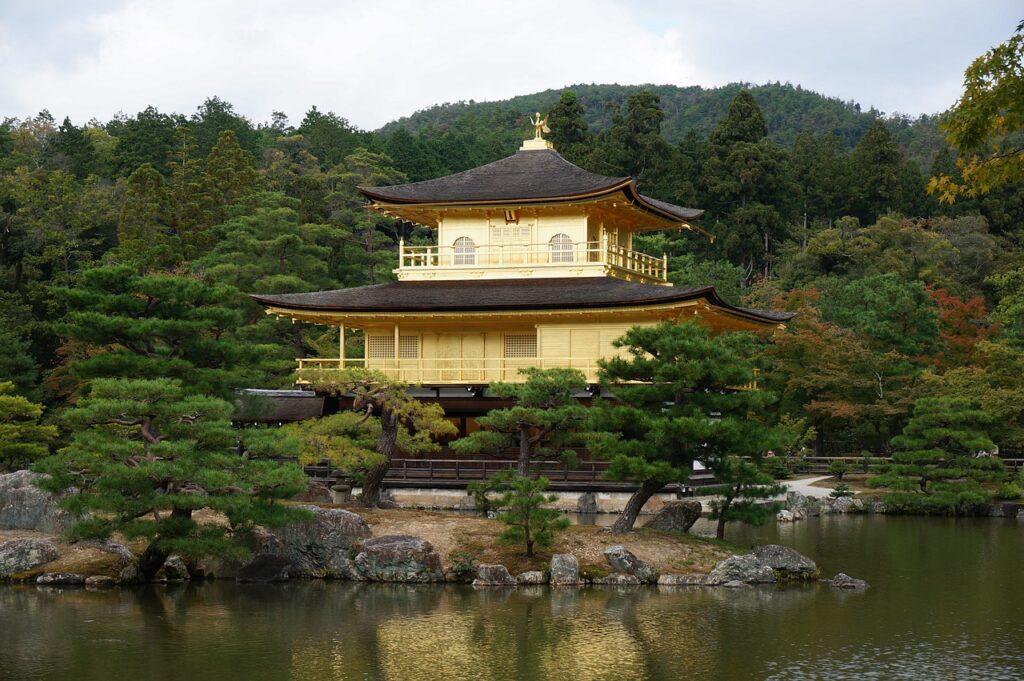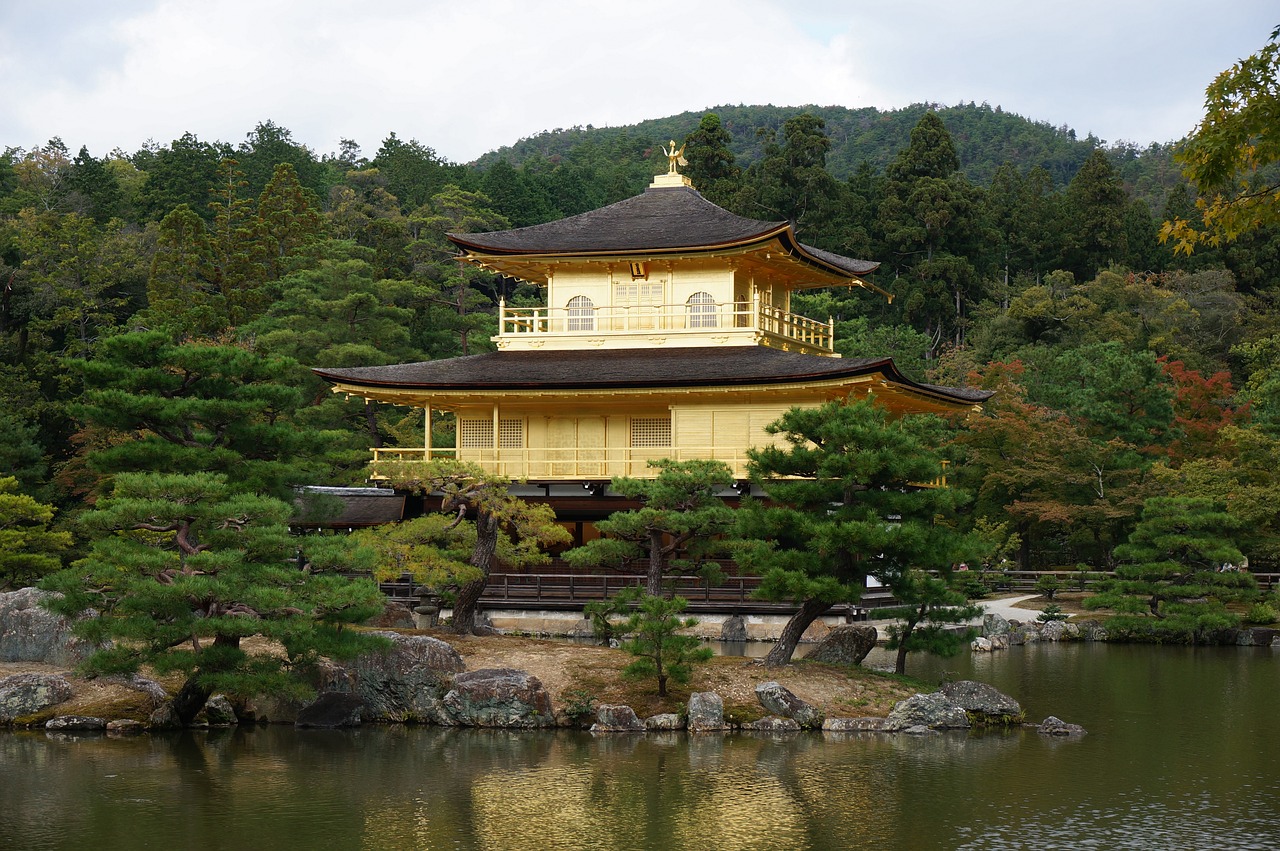Introduction

Kyoto is a dream destination for many Singaporean travelers. This ancient city, once Japan’s capital, is famous for its golden temples, peaceful Zen gardens, and charming traditional streets. It’s no wonder Kyoto often tops the must-visit list for folks from Singapore – a country that equally appreciates clean cities and rich culture. But even with all its beauty and history, Kyoto can surprise first-time visitors in a few unexpected ways.
Despite Japan’s modern image, Kyoto has its own pace and quirks. For Singaporeans used to efficient MRTs, cashless payments, and a fast-paced lifestyle, some aspects of Kyoto life may come as a shock. Don’t worry – these surprises are all part of the fun of traveling! In this post, we’ll explore three things that often surprise Singaporeans in Kyoto, and share tips (with a bit of simple Japanese) on how to handle them. Enjoy your read, and get ready for an eye-opening trip to the land of the rising sun. 🌸
Point 1: Trains Don’t Come Often
A family waits patiently on a bench at a Kyoto train station, a common sight since trains aren’t as frequent as in Singapore.
If you’re used to Singapore’s MRT arriving every 2–3 minutes, Kyoto’s train schedule might surprise you. In Singapore, missing a train isn’t a big deal because the next one zooms in almost immediately. In Kyoto, trains (especially local lines or private railways) might run only every 10–15 minutes – or even less frequently during off-peak hours. For example, a regional line or subway in Kyoto might have just 4–6 trains per hour instead of the continuous stream Singaporeans expect
. This means if you just miss a train, you could be waiting awhile on the platform for the next one.
Why the longer waits? Kyoto is a smaller, historic city – not a buzzing metropolis like Tokyo. The public transport network is excellent, but it isn’t designed for super high-frequency service. Some lines are privately operated and serve local neighborhoods or tourist spots at a relaxed timetable. Even the JR trains connecting Kyoto to nearby cities (like the JR Special Rapid to Osaka) run about every 15 minutes, not every 5 minutes. The pace is simply less rushed. Locals don’t seem to mind waiting, and you’ll see people sitting calmly on benches or scrolling their phones until the train comes.
Travel tip: Always check the train timetable so you can plan around the schedule. Don’t worry, it’s easy! Download a route planning app like Google Maps or Navitime on your phone – they’ll tell you exactly when the next train or bus is arriving. (With Google Maps in Japan, enter your destination and it gives you the upcoming transit times.) It’s also a good idea to note the last train times at night. In Kyoto, trains and subways stop running around midnight (and some local lines even earlier), so plan your late outings accordingly – you don’t want to be stranded or pay for an expensive taxi. And since you might be waiting a bit longer for that train, bring a light jacket if it’s cold, and use the downtime to people-watch or review your itinerary for the day.

(京都では電車は数分おきに来ません。時刻表を確認しましょう。) – In Kyoto, trains don’t come every few minutes. Be sure to check the timetable!
Point 2: Cash is Still King
A traditional ramen shop in Japan – many such small eateries are cash only, so always carry some yen for a tasty meal.
Back home in Singapore, you can survive days with just a card or e-wallet – from hawker centres to MRT rides, cashless payment is everywhere. In Kyoto, however, you’ll quickly discover that cash is still king. Many small restaurants, street food stalls, mom-and-pop shops, and even some temples or museums in Kyoto only accept cash. Don’t be surprised if you see a little sign at the register that says “現金のみ” (genkin nomi – cash only) or if the staff politely tells you, “Sumimasen, cash please.”
Singaporeans used to tapping their NETS or credit cards might find this a bit inconvenient at first. Imagine finishing a delicious bowl of ramen or buying a beautiful handcrafted souvenir, only to find your credit card won’t swipe – oops! In Kyoto (and Japan in general), cash is the default for many transactions. A 2023 study showed that Japan’s cashless payment ratio is only about 40%
, meaning roughly 60% of purchases still happen with good old notes and coins. This is a huge contrast to Singapore, where digital payments are the norm.
Travel tip: Carry enough Japanese yen (¥) with you. You don’t need to stuff all your yen in your wallet at once, but always have some cash handy for daily spending. You can exchange some SGD to JPY before your trip, but an even easier way is to withdraw yen from ATMs in Japan. Thankfully, Kyoto has plenty of international ATMs at convenience stores like 7-Eleven, FamilyMart, and Lawson. These ATMs are usually 24/7 and support foreign cards (look for the Plus or Cirrus logos on your debit card). The menus are available in English, so it’s straightforward – and you’ll get a fair exchange rate. Tip: 7-Eleven ATMs are particularly reliable for foreign cards and often have lower fees. So if you’re running low on cash, just pop into the nearest convenience store (Konbini) and withdraw more yen. It’s quick and safe.
Also, while larger establishments (department stores, hotel chains, shinkansen ticket counters) will accept credit cards, when exploring Kyoto’s traditional markets or smaller eateries, assume cash only. It’s part of the experience – those crisp yen notes and shiny coins will become your best friends. One more thing: keep a coin pouch! You’ll accumulate 100-yen and 10-yen coins for vending machines, temple donations, and bus fares. Embrace the jingle of change in your pocket as a sound of traveling in Japan. 😉

(小さなお店では現金しか使えない場合が多いです。) – In many small shops, you often can only use cash.
Point 3: Kyoto’s Slower Pace
A quiet street in Kyoto on a sunny afternoon, exemplifying the city’s calm and unhurried atmosphere.
One of the first cultural differences Singaporeans notice in Kyoto is the slower pace of life. Coming from fast-paced, ultra-efficient Singapore, you might at first feel like everything in Kyoto moves in slow motion. But don’t worry – this is actually one of Kyoto’s greatest charms! The city operates on what you could call “Kyoto time,” a relaxed rhythm that encourages you to take it easy and soak in the moment.
On Kyoto’s streets, no one’s power-walking to overtake you. Locals stroll leisurely, whether it’s a businessman on his way to work or an elderly obaasan heading to the grocery store. You won’t see the mad rush that you get in downtown Singapore or Tokyo. Even the public transport feels unhurried. Buses in Kyoto often run a few minutes behind schedule due to traffic or narrow streets – and that’s considered perfectly normal there. Drivers might even wait an extra moment if they see someone running for the bus (imagine that happening with our SBS buses!). When a bus is a bit late, you might hear an apology over the speakers, but generally people are patient and unflustered. It’s all part of the Kyoto vibe.
The same goes for daily activities. Service at restaurants and shops in Kyoto is polite and never rushed – you’re expected to sit and enjoy your meal or take your time choosing a souvenir. In Singapore we’re used to quick transactions and instant service, but in Kyoto, you might find yourself slowing down naturally. And that’s a good thing! It’s an opportunity to enjoy a more laid-back holiday. If you schedule every minute of your itinerary like a race, you might end up frustrated. Instead, plan a bit of extra buffer time for walking between attractions or waiting for that bus or train. Allow yourself to linger at a beautiful garden or have a long chat with a local artisan – those moments often become the best memories.
Travel tip: Try to match Kyoto’s pace rather than expecting it to match yours. If things take a little longer, breathe in, look around, and appreciate where you are. For example, if you arrive early for a train, grab a vending machine drink and watch the scenery or people around you. If a temple is crowded, wait a bit – the crowd will ebb and flow. Early mornings and evenings can be especially tranquil times to explore Kyoto. And don’t cram too many activities into one day; it’s better to fully enjoy three spots than rush through six. Remember, you traveled all the way here to enjoy Kyoto, not to sprint through it. Adopting a slower stride and an open mind will help you relish the city’s gentle charm. By the end of your trip, you might even prefer the slower pace!

(京都は「ゆっくり」の街。あせらず旅を楽しんでください。) – Kyoto is a “take it slow” city. Don’t rush, and enjoy your journey!
Conclusion
Kyoto’s unique quirks – the infrequent trains, the love of cash, and the unhurried lifestyle – are all part of what makes the city so special. These little surprises might require a bit of adjustment, especially for Singaporeans accustomed to constant efficiency. But with a bit of preparation and the right mindset, they’ll actually enhance your travel experience. You’ll come home not only with beautiful photos of shrines and sakura, but also with new appreciation for different ways of life. After all, travel is about experiencing something different from home!
Before you jet off, here are a few final tips to make your Kyoto adventure even smoother. Stay connected: Consider renting a pocket Wi-Fi device or getting a local data SIM card, so you can use Google Maps, translator apps, and keep in touch with family. (You can easily reserve a pocket Wi-Fi online and pick it up at Changi or upon arrival in Japan – services like Klook or KKday offer convenient rental options for travelers.) Having internet on-the-go is super helpful for checking train schedules or finding that hidden ramen shop that was recommended. Also, look into travel booking platforms like Klook or KKday for Kyoto activities and deals. They often have discounted tickets for attractions, guided tours, or even food experiences. For example, you might find a tea ceremony class or a Kyoto day tour on these apps at a good price. Booking in advance not only saves you money but also ensures you have a spot, so you can relax and enjoy without worry.
Lastly, embrace the differences with an open heart. Pack your sense of adventure along with your passport. Whether it’s waiting 12 minutes for a train (it’s not that long, really!), digging out yen coins to buy tasty street food, or slowing down to match the cadence of a centuries-old city – these are the moments that make Kyoto memorable. So take a deep breath of that fresh Kyoto air, let the city enchant you at its own pace, and have a fantastic trip. Happy travels, or as they say in Japan, 良い旅を (yii tabi wo)! 🇯🇵✨
情報源




コメント